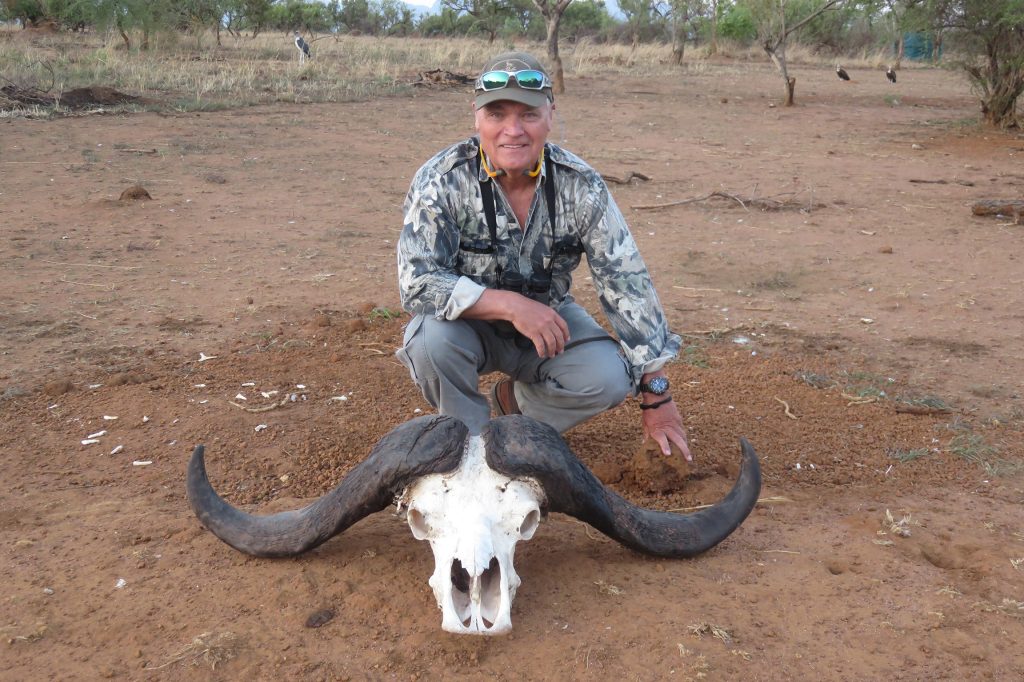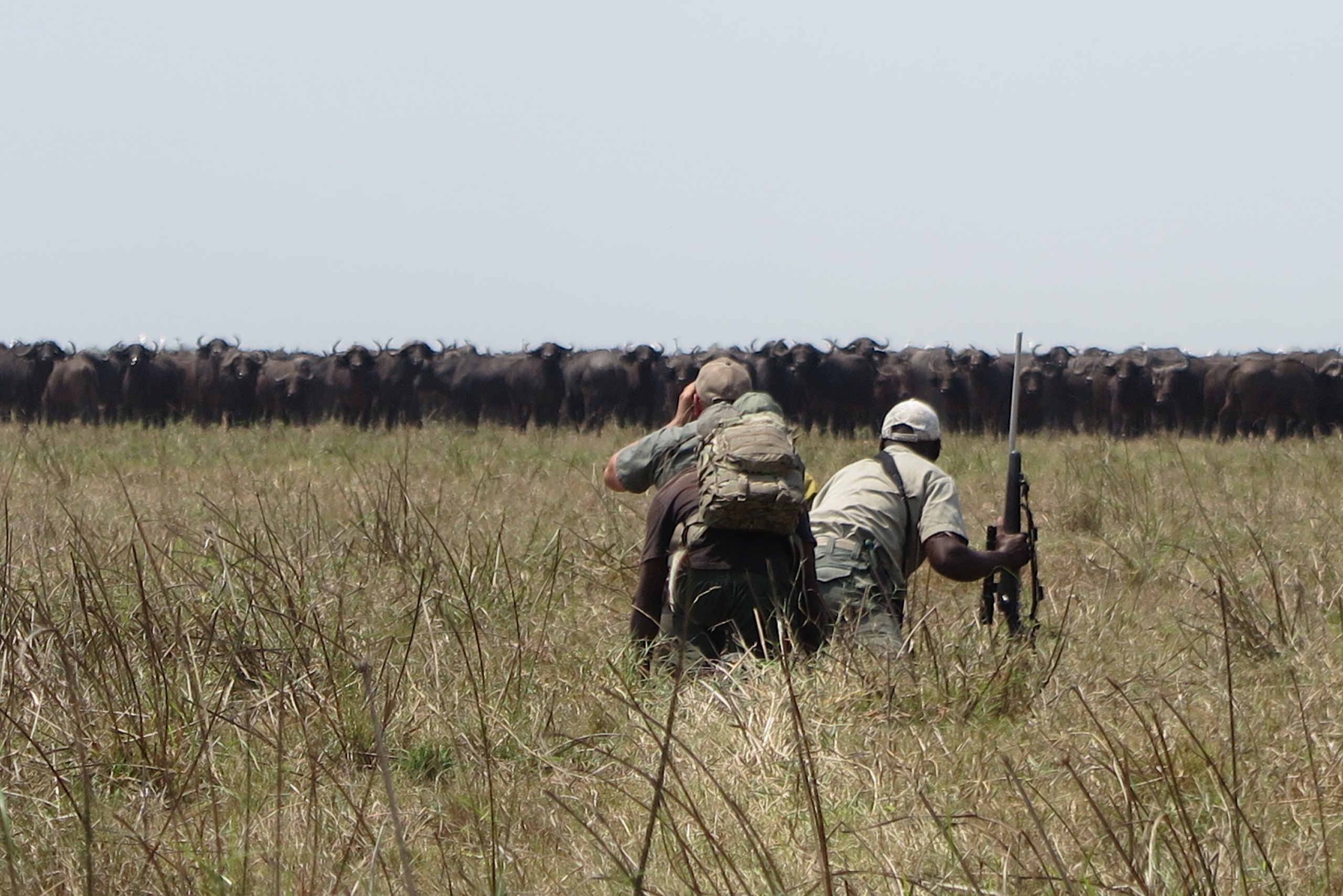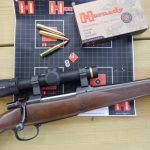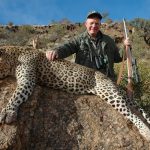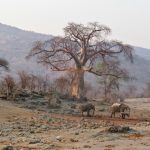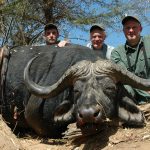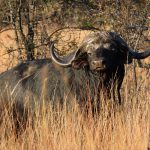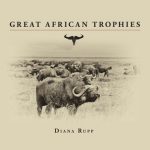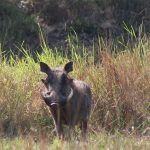Choosing the right destination for your Cape buffalo hunt.
There are two big differences between hunting in Africa and the rest of the world. First is the variety. A typical hunting area in Africa will hold ten or a dozen varieties of antelopes. This occurs naturally almost nowhere else on the planet.
Second is the opportunity to pursue dangerous game: the traditional Big Five or the newer Dangerous Seven (adding crocodile and hippo). Costs vary, but Africa’s full suite of dangerous game remains huntable. In the fifty years that I’ve been obsessed with African hunting I’ve seen opportunities ebb and flow. In the 1970s, Americans couldn’t import leopard trophies, and hunting a Southern white rhino was unimaginable. In the 1980s, it was widely held that elephant hunting was finished. On the other hand, lion hunting was still readily available.
Throughout it all, the African buffalo has been the constant, easily the most numerous, widespread, and available of Africa’s dangerous beasts. Today, many hunters have little interest in pursuing pachyderms and the great cats, even if they could afford to. The buffalo is a different deal. Most hunters who dream of Africa long for a face-to-face encounter with Africa’s “black death.” As iconic as his fearsome fellows, no one considers the African buffalo threatened. In hunting areas, he is an important meat source, and also marvelous fun to hunt. He is an affordable dream, on par with a decent elk hunt.
Where, across the vastness of Africa, are the best places to fulfill that dream? This, too, has changed. In the 1970s, the short, inexpensive “plains game safari” didn’t exist, and ten-day buffalo safaris were unusual. Typical safaris were three weeks, including opportunity for two or three of the Big Five. Back then, little was going on in Namibia or South Africa. The most common destinations were Botswana, Kenya, Tanzania, and Zambia. All held plenty of buffalo.
The closure of Kenya in 1977 changed the game. Sleepy Namibia and South Africa came to life and game ranching industries grew. Inexpensive and productive, Namibia and South Africa became hubs for the emerging short plains game safaris, but buffalo were scarce and expensive there.
In 1981, Rhodesia became Zimbabwe and the long, brutal bush war ended. This opened up the buffalo-rich Zambezi Valley and another “new” safari emerged: The ten-day buffalo safari. Zimbabwe was the leader, but she had competition. Buffalo were plentiful in many areas, with larger quotas than for other dangerous game and key antelopes. Botswana, Tanzania, and Zambia competed directly with Zimbabwe in the growing “buffalo safari” market. Costs were higher than “plains game only,” but a fraction the cost of full-bag safaris in the same areas, from the same camps.
Things changed again. With burgeoning herds, Botswana reopened elephant hunting. Since then, and now, hunting in Botswana is an “elephant economy.” In truth, all other species in Botswana are depressed from competition with overpopulated elephants. She has excellent buffalo, but nothing like the numbers I saw in the 1980s, and Botswana hunting is not inexpensive.
Let’s take a look at a few notable places to hunt buffalo today.
TANZANIA AND ZAMBIA
Tanzania has a huge buffalo population, especially in the Selous Reserve and the central Rungwa region. With multiple buffalo on a seven-day license, she remains a good destination for a shorter buffalo safari. However, operating costs are high, and air charters are usually needed. Tanzania offers wonderful buffalo hunting, but is more expensive than other current options.
Zambia is similar. Although still a primary destination for full-bag safaris, she has fantastic buffalo. Two of my “top three” buffalo came from Zambia, and I was pleasantly amazed at the numbers of buffalo—and quality of bulls—I saw in the Luangwa in July ’21. Zambia is also a costly country to hunt but excellent for buffalo.
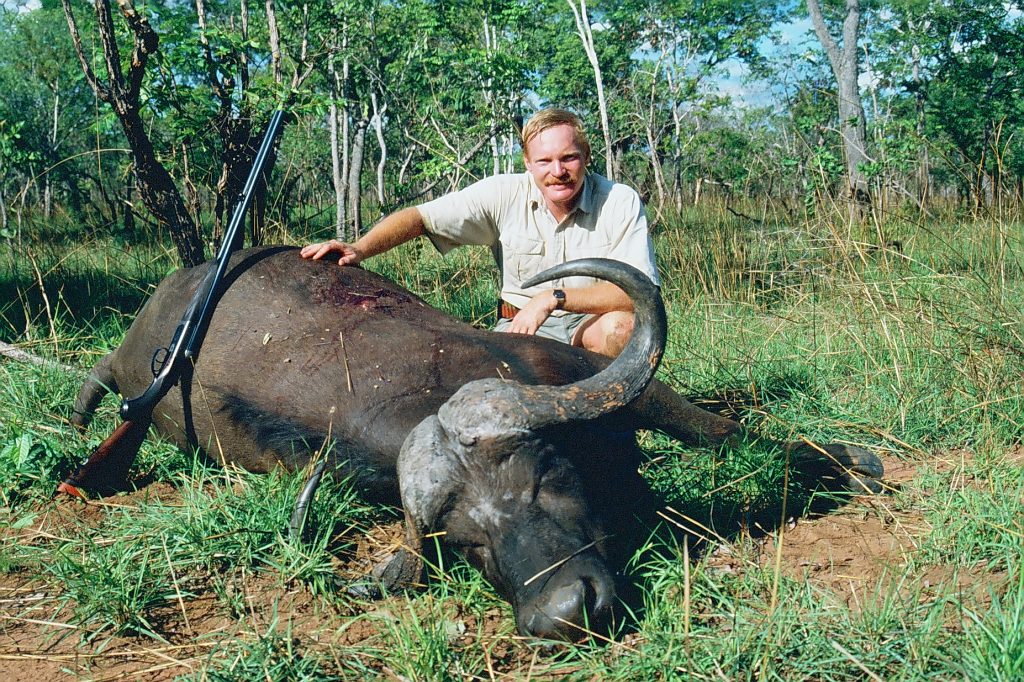
SOUTH AFRICA
By the early twentieth century, South Africa’s buffalo were nearly eradicated because of bovine diseases. Using scarce and precious disease-free stock, South African game ranchers have been breeding buffalo for decades. Genetics are superb, but building up the numbers took many years. For most of my career, surplus bulls in South Africa have been scarce. And, despite horn quality, so expensive that I discounted them. It happened so gradually that I just plain missed the sea change. Today, huntable private herds exist all over South Africa.
Supply finally matched demand, and prices plummeted. Trophy fees will be high for exceptional bulls (which South Africa definitely has), but daily rates are Africa’s lowest, and average horn quality excellent. Roads are good, along with an effective network of internal flights.
Put it all together, and South Africa now offers the least expensive buffalo hunting on the continent. There is one catch: Most of her buffalo are behind fences. Some “buffalo properties” are large, others not. Bush tends to be thick, and my experience with these buffalo is they tend to be unusually aggressive. Also, they know their ground, so hunting them often isn’t easy. Most of the time, hunters are unaware that there’s a fence out there somewhere, but its presence is a fact one must be aware of when considering a buffalo safari.
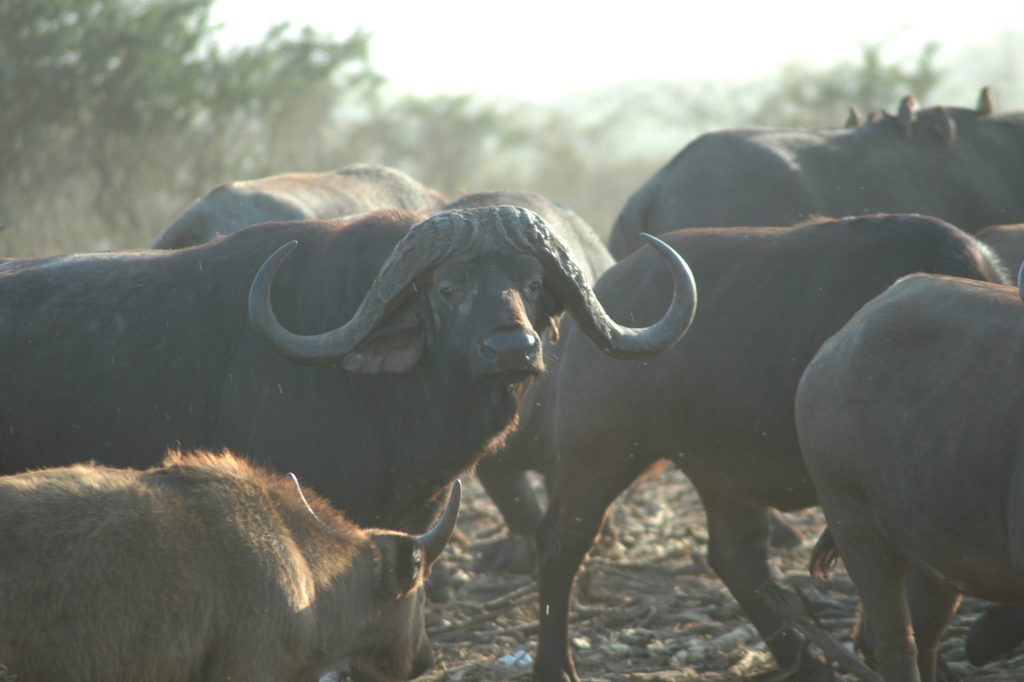
ZIMBABWE
Zimbabwe remains a fine buffalo destination. With good numbers and resultant quotas, Zimbabwe probably offers Africa’s least expensive free-range buffalo hunting. The “ten-day buffalo safari” is Zimbabwe’s most popular hunt, bread and butter for her outfitters. Buffalo are found all around her periphery: Zambezi Valley to the north; Matetsi to the northwest; the entire Hwange Park corridor to the west; and on the huge conservancies to the south and southeast. Areas vary, depending largely on management. Zimbabwe is not known for huge bulls, but this is misleading. Zimbabwe’s buffalo country tends to be thick. This makes it difficult to identify the best bulls, but they’re there. I’ve taken a few great Zimbabwe bulls—and seen more taken. Zimbabwe is solid for buffalo, with hunting usually done by the classic tracking method.

MOZAMBIQUE
In Portuguese days, Mozambique was known for legions of buffalo. She wasn’t hunted during her long civil war (1975—1992), and in its wake little wildlife remained. Hunting resumed thirty-some years ago. In that time her wildlife has recovered, at least in well-managed areas.
Mozambique offers relatively inexpensive buffalo safaris. Prices are similar to Zimbabwe, a primary difference being that Mozambique is a huge country with poor roads, so charter flights are usually needed. Without question her greatest concentration of buffalo is found in the Marromeu complex south of the mouth of the Zambezi. From perhaps 1200 surviving buffalo in 1992, the current count is 30,000, one of Africa’s greatest concentrations. In recent years, Marromeu buffalo have been captured and moved to less fortunate areas, including around Gorongosa National Park.
I love the swamp buffalo hunting in the Zambezi Delta, but it is not Mozambique’s only good buffalo area. The north, in and around huge Nyasa Reserve, doesn’t have as many buffalo, but produces outstanding bulls. Likewise, the Lower Zambezi, where Mozambique, Zambia, and Zimbabwe join. Mozambique’s long Kruger Park boundary also holds big bulls.
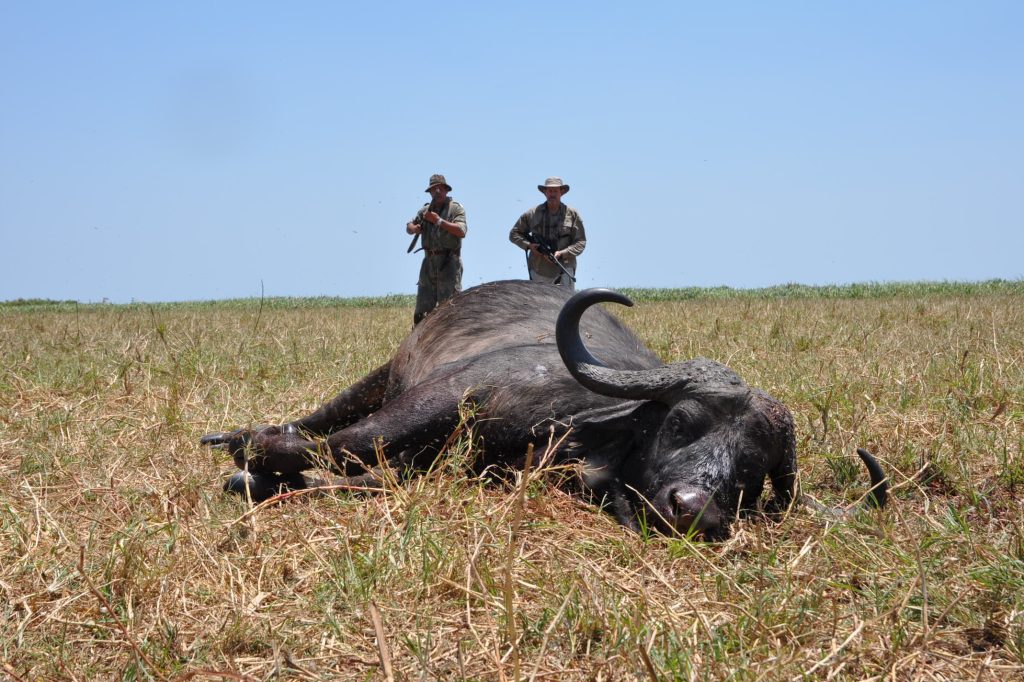
NAMIBIA
Much of Namibia is just too dry for buffalo. More importantly, because of bovine disease concerns, her game ranchers have not been allowed to breed up buffalo like their South African counterparts. As a result, Namibia’s buffalo country is limited, primarily to the Caprivi in the far north, and isolated reserves, such as Waterberg in the northeast. As a result, quotas are low and prices for Namibian buffalo hunts are high. Against this, management is superb and, wherever found, quality is outstanding.
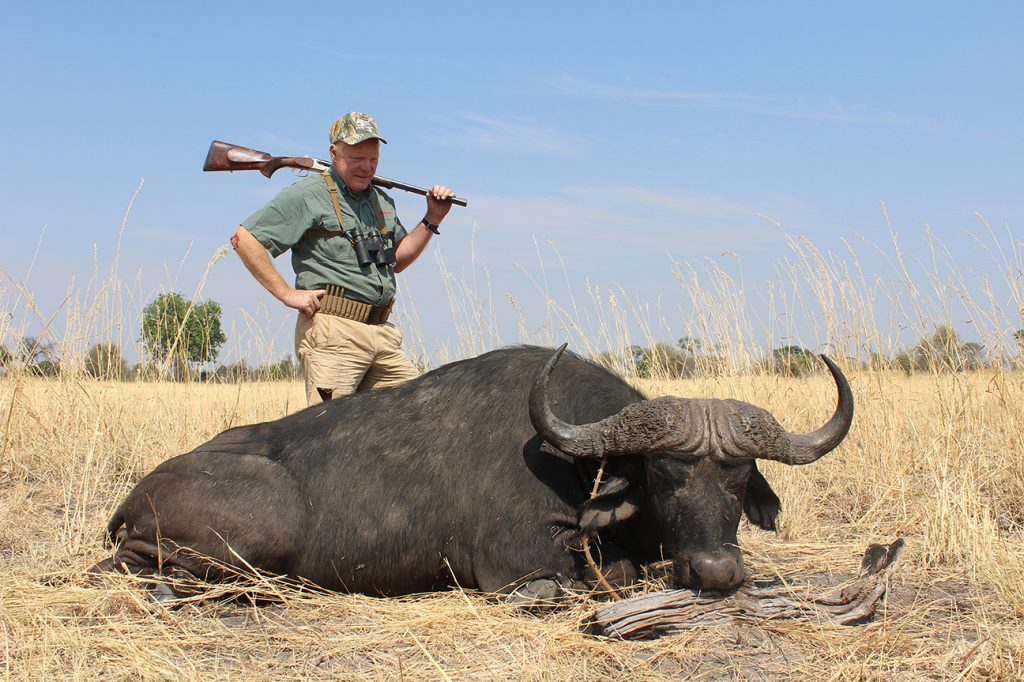
UGANDA
Before Idi Amin came to power, much of Uganda was overrun with buffalo, with up to five on license. Like Mozambique, little was left when the dust settled. The difference: Hunting resumed in Uganda just a dozen years ago, and only in isolated pockets. Those pockets are good and have gotten better, with recovery ongoing. Uganda’s hotspot for buffalo is the famous Karamoja region in the far north. On the South Sudan border, Kidepo National Park holds more than 10,000 buffaloes, with hunting areas to the south.
Northern Uganda buffalo are classed as Nile buffalo, a bit smaller than Cape buffalo, with flatter horns. Realistically, Kenya lies just over the ridge from Karamoja, and Kenya was famous for big bulls. Karamoja’s buffaloes are unquestionably a mix, but she produces good bulls. Maybe not the biggest in either body or horn, but for those who crave a “40-inch” bull, Karamoja is one of the best places I’ve seen. It’s important to time it when the grass is short. In March, I’ve never seen a place where I could look over more bachelor groups. Many bulls are flat and narrow but in the mix are gorgeous bulls with spreads into the low forties.
